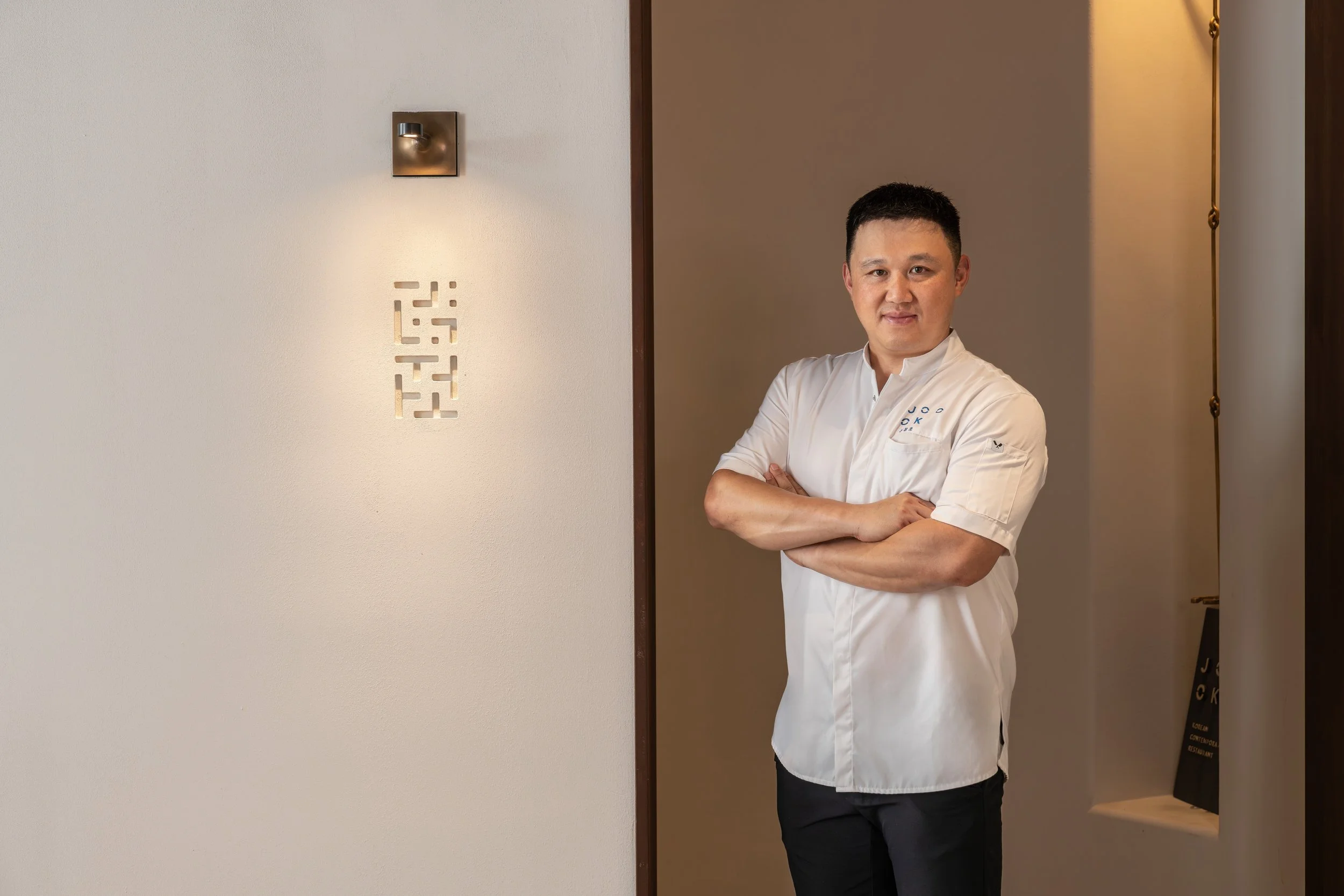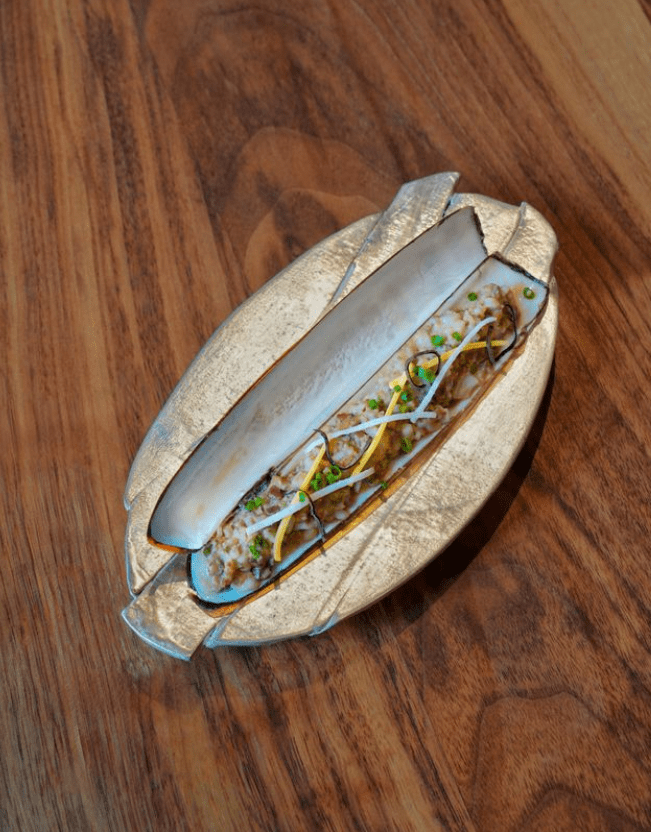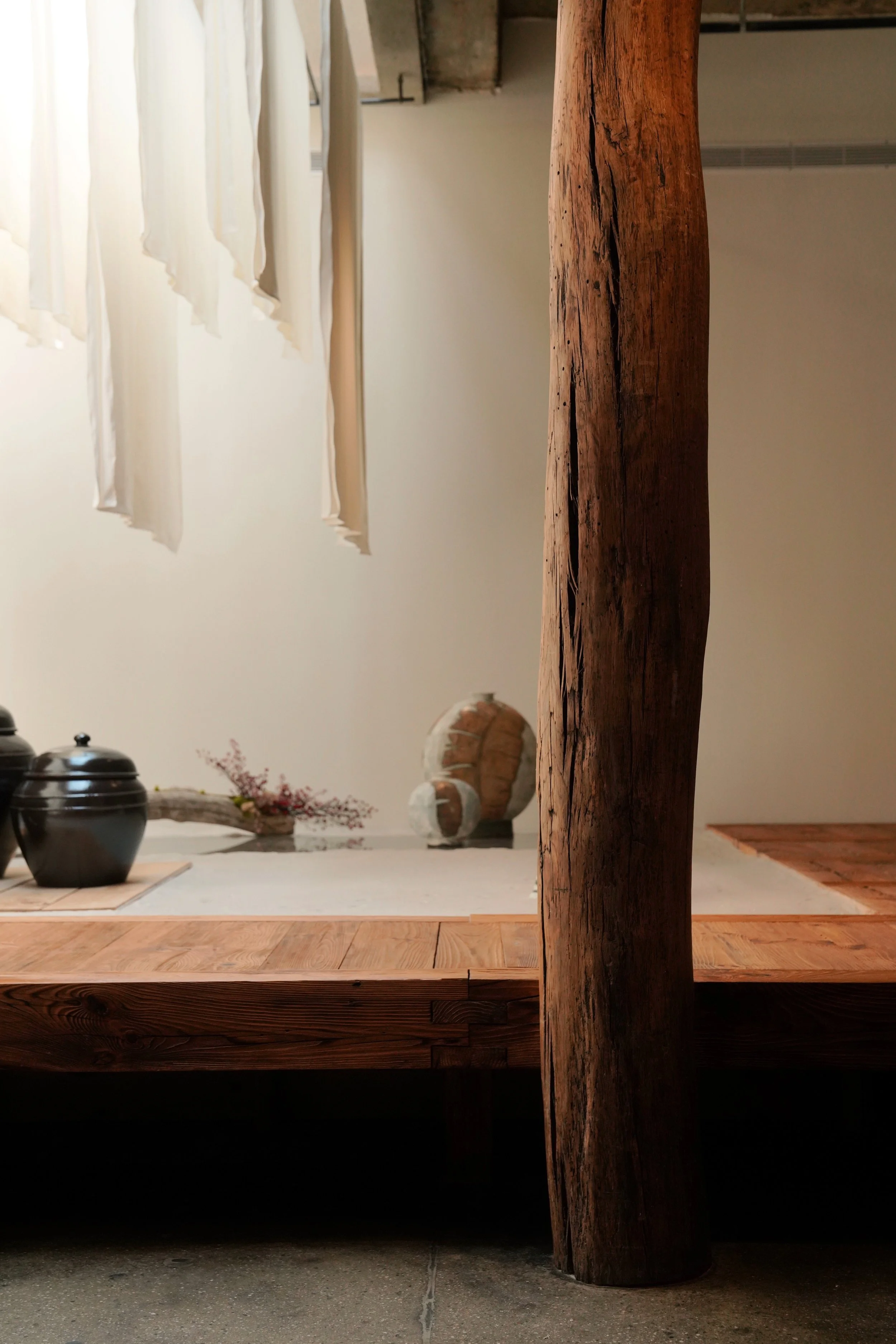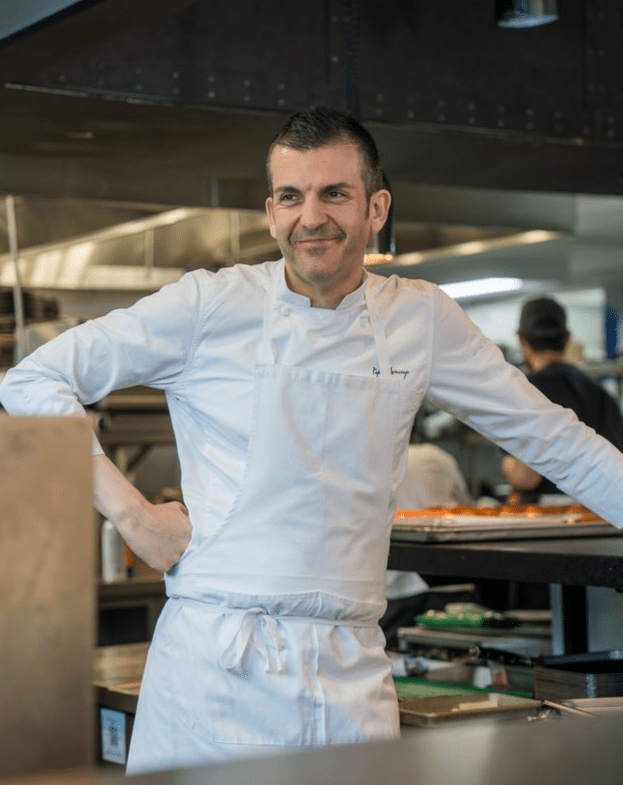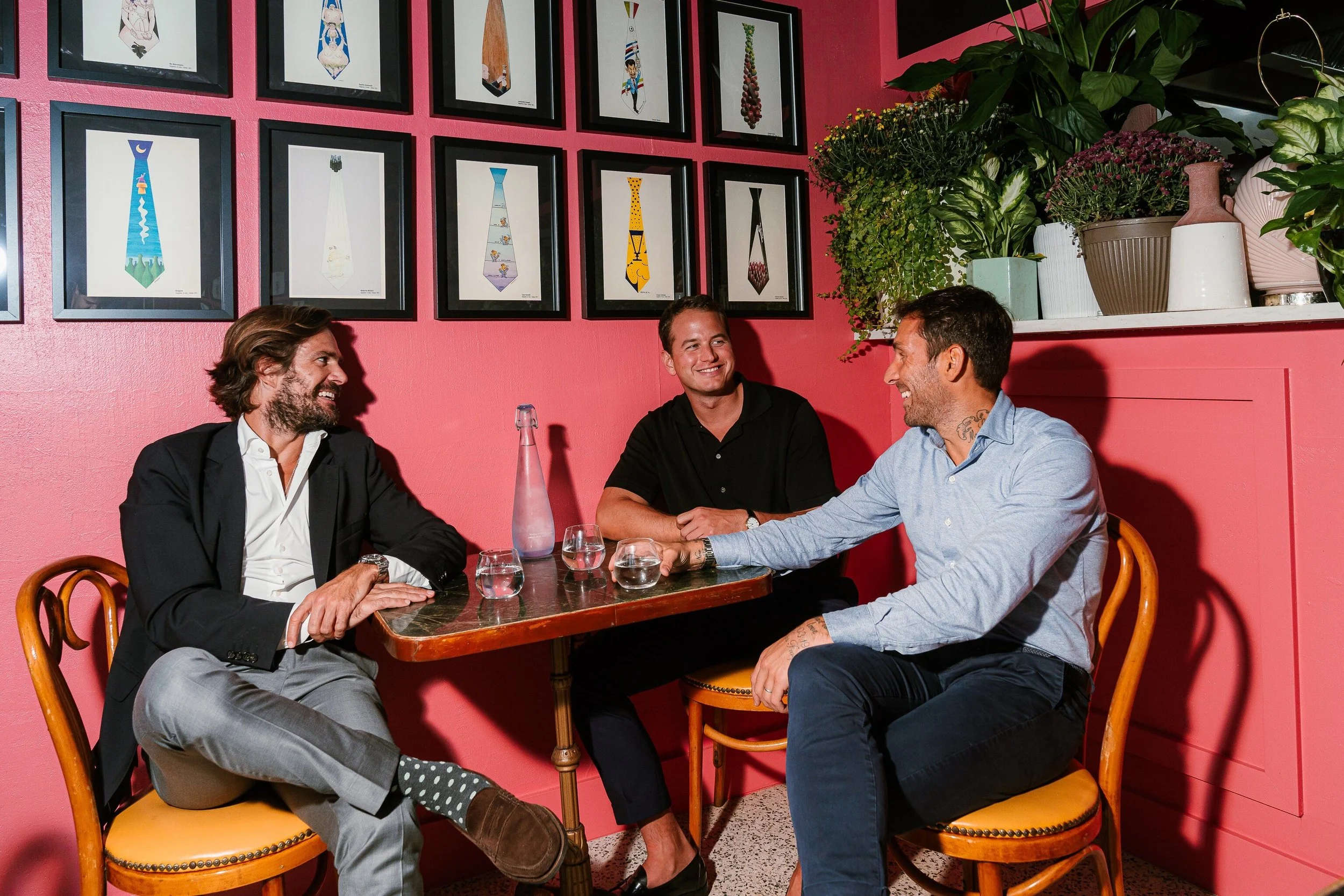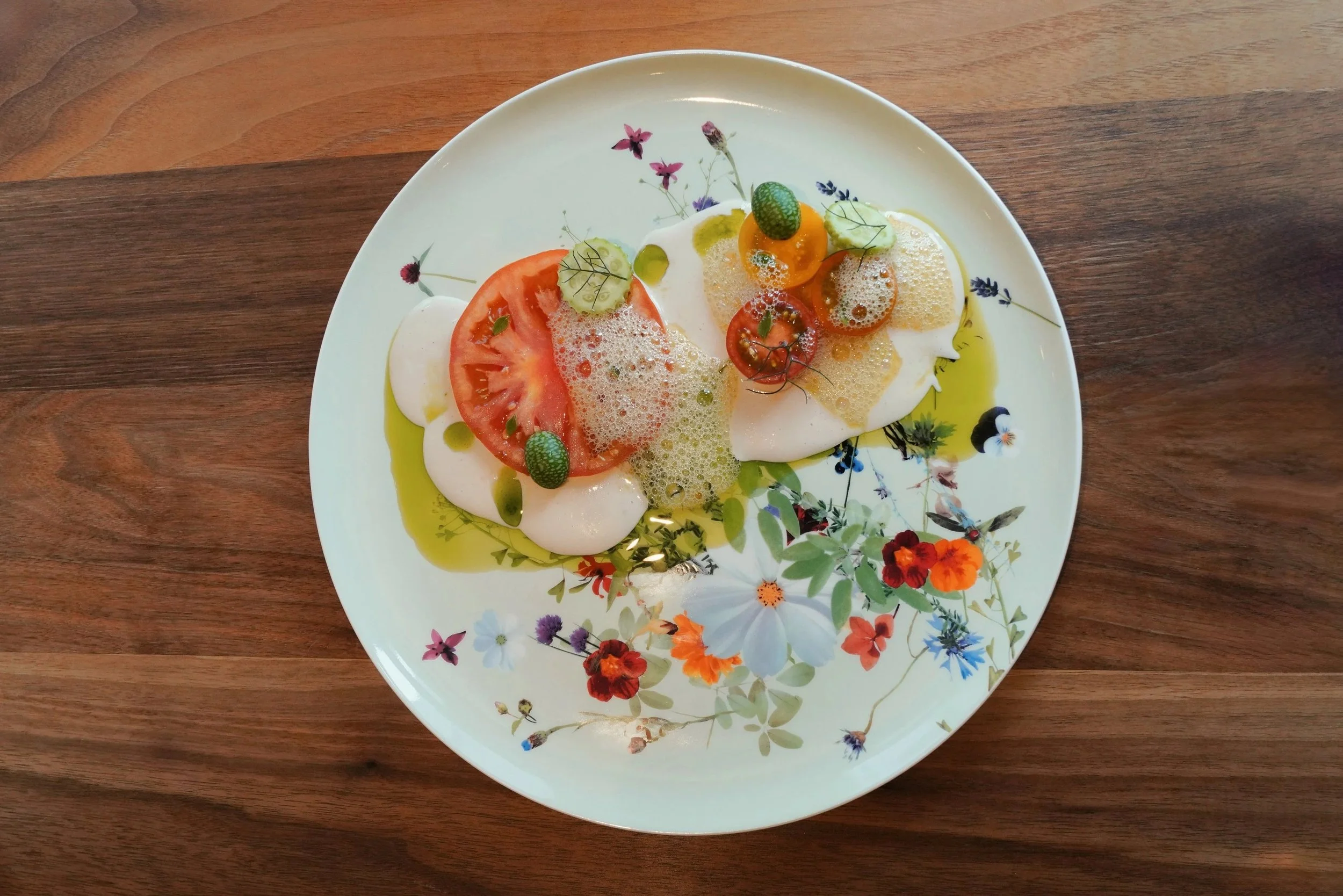
CHEF PROFILES
This is How Shin Chang-ho Built Joo Ok, a Korean Kitchen Rooted in New York Soil
JOO OK | $$$$$ | MAP | WEBSITE | INSTAGRAM
By Eric Barton | Sept. 30, 2025
AUTHOR BIO: Eric Barton is editor of The Adventurist and a freelance journalist who has reviewed restaurants for more than two decades. Email him here.
The first time Shin Chang-ho realized food could mean more than just a meal, he was watching his grandmother stir a pot of sikhye, the sweet fermented rice drink that appeared at family holidays. “The process of making it, and the way it was shared with family,” he recalls, “that was when I first recognized that cooking could be more than just consumption—it could be an intentional act of preparation and giving.”
It’s a memory that explains a lot about his career: a life spent coaxing flavor from fermentation, and now, in New York City, teaching diners that Korean cuisine’s foundations lie in what ferments quietly, invisibly, in the background.
Shin’s importance today is hard to overstate. In Seoul, he ran a two-Michelin-starred restaurant, celebrated for its deep respect for tradition and ingredients. Then, in a bold move, he brought Joo Ok to Manhattan—a relocation that not only uprooted his team but also redefined what Korean fine dining could look like in America. Instead of importing flavor, he began building it from the ground up, literally, with jang made from New York soybeans and vegetables grown on his own two-acre plot upstate.
Shin Chang-ho
Growing up, Shin told me he had a split education in taste. His paternal grandmother came from Jeolla Province, known for bold, earthy cooking; his maternal grandmother hailed from Kaesong, where food leaned delicate and restrained. “Even though no one sat me down to teach me about flavor, I think those early meals shaped how I taste and think about food today,” he says. His maternal grandmother’s bossam kimchi, packed with seafood, still lingers in his mind.
By the time Shin began working in kitchens, jang—the fermented soybean pastes and sauces at the center of Korean cuisine—was a constant. Early in his career, he mostly encountered commercial versions. But as he rose through the ranks in Seoul, eventually leading Joo Ok to critical acclaim, he returned to handmade jang, each batch distinct and alive. Moving to New York made him go deeper still.
Shrimp, geoduck, and house-pressed perilla oil
“We’ve started making jang here as well, using local soybeans to create what I think of as a ‘New York jang,’” he explains. “The batch we made last year is fermenting beautifully, and we plan to start using it soon.”
Branzinno with year-old ganjang
Razor clam with yuzu
Relocating Joo Ok was never going to be simple. Shin knew ingredients would be the biggest challenge. “In Korea, I had stable access to the jang, wild greens, and seasonal produce that form the foundation of my cooking. But in New York, that infrastructure didn’t exist,” he says. So he started building it—working with farms, fermenting from scratch, and planting Korean cultivars on land upstate. You’ll see that in "Togather" Farm, pictured up top: organic tomatoes with herbs grown at the Joo Ok farm. The team pressed perilla oil weekly, turned the leftover seed meal into compost, and folded that compost back into the farm’s soil. Cooking became agriculture, and agriculture became philosophy.
Watermelon sorbet with mascarpone songpyeon
That philosophy now shapes every plate at Joo Ok’s sleek midtown dining room, a space that Michelin calls “strikingly stylish,” with sculptural light fixtures and a dining room that feels equal parts gallery and temple. The way Shin’s fermentation lab feeds directly into the kitchen’s tasting menus is seamless, a deliberate blending of the two. Diners encounter dishes like soy-braised burdock root alongside seasonal greens that trace a full life cycle—shoot, blossom, seed, compost. It is a system that explains itself in flavor.
For Shin, that flavor requires context. Abroad, he argues, Korean food is often interpreted superficially. “Instead of simply presenting Korean food through surface elements, we try to express its foundations: jang, fermentation, and seasonal Korean vegetables,” he says. That means educating diners, sometimes slowly, about the role of doenjang, ganjang, and gochujang. Once people understand those, the depth of hansik begins to reveal itself.
Joo Ok was designed by Two Point Zero
Looking forward, Shin talks about a dream menu that relies entirely on New York’s terroir. “One day, after a few more years of learning and building those relationships, I’d love to create a Joo Ok tasting menu made entirely from New York’s local ingredients,” he says. The jang, of course, will be ready—the quiet reminder that fermentation doesn’t just flavor food; it measures time.
Views from the Joo Ok skylight
The Trio That Made Single-Item Restaurants a Thing—And Sent the Idea Nationwide
Three restaurateurs walk into Miami and decide one dish is enough. Now everyone’s copying them.


